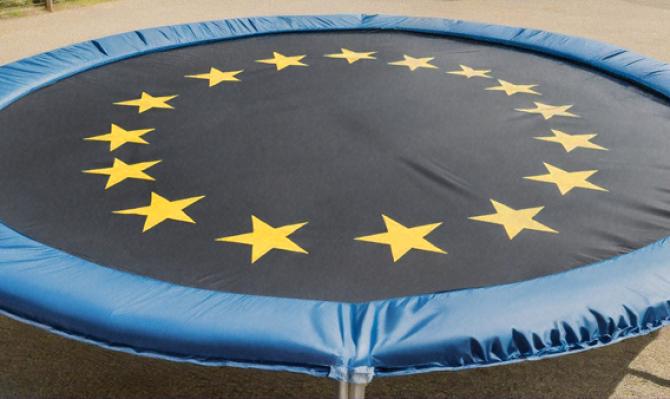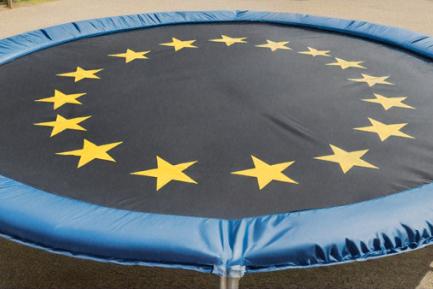Beyond NGEU: investments in Europe to adapt to and survive in the new times
The NGEU funds and the national investment programmes in Germany and France are the result of a long process of changes in the big economic blocs, accelerated by COVID and the war in Ukraine. These efforts seek to redefine and adapt production models to the energy transition and digitalisation in a context of uncertainty and new geopolitical dynamics.

The NGEU funds and the national investment programmes in Germany and France are the result of a long process of changes in the big economic blocs, accelerated by COVID and the war in Ukraine. These efforts seek to redefine and adapt production models to the energy transition and digitalisation in a context of uncertainty and new geopolitical dynamics. These spheres of action represent the main pillars on which the Draghi plan is articulated, which states that, in order to achieve them, a coordinated effort among Member States and significant public investment is needed, with an industrial strategy and the single market as key priorities. The European Commission has «taken the baton» from Draghi and in January published its Competitiveness Compass, a timetable for implementing some of Draghi’s main proposals.
NGEU, with a budget of more than 800 billion euros between 2021 and 2026, is the largest stimulus programme in the European economy in recent decades. Initially, it focused on helping the most vulnerable economies and those hardest hit by COVID, through offering support for structural changes and projects related to the green and digital transition, very much in line with the subsequent recommendations of the Draghi report.1 NGEU was spearheaded by Germany and France, which, with a more robust economic position, stepped forward and created their own national economic stimulus plans after the pandemic. Subsequently, a part of the measures incorporated in the national plans shaped their respective future recovery and resilience plans (RRPs), developed under the NGEU framework. Therefore, these funds are financing only a part of the total amount of their national plans: less than 20% in the case of Germany and 40% in the case of France. This contrasts with Italy and Spain, whose national revival plans were the RRPs, and these were designed to match the volume of available NGEU funds.2

France launched the so-called France Relance programme in September 2020, comprising a series of measures valued at 100 billion euros (3.5% of 2023 GDP) to be pursued up until 2030. The plan is designed around three axis, among which the funds are allocated equitably. The first is to promote the energy transition. The second, to bolster the country’s industrial sovereignty in order to make it more independent and improve its competitiveness. The third is to improve training and employment, with an emphasis on training for young people.
Germany, for its part, announced in June 2020 a stimulus programme worth 130 billion euros (3.1% of 2023 GDP), of which almost 40% was allocated to financing measures in the field of the green and digital transformation (other pillars of the programme include temporary VAT cuts, support for local municipal governments and subsidies for households). In March 2021, the German Future Fund was created, with a budget of 10 billion euros covering the next 10 years. This fund is aimed primarily at funding growing startups with high capital needs, and it could mobilise up to 50 billion euros, according to estimates by Germany’s own Ministry of Finance, thanks to the participation of other public and private actors and the use of various existing financial instruments.
Public investment in fixed capital seems to be reflecting the impact of these plans. For instance, in France, its average annual growth between 2000 and 2019 was less than 3.0%, whereas since 2020 it has risen to 4.7%. An even bigger impact is observed in Germany, where it has gone from an average growth of 2.8% in the period 2000-2019, to an average of 6.0% since 2020.
The NGEU plan seeks to improve cohesion and accelerate economic convergence between Member States, with a focus on the energy transition and digitalisation. Financed by joint debt issues, it sets an important precedent. The Draghi report recommends going beyond NGEU, proposing a similar mechanism to finance a portion of the 800 billion euros a year that the plan aims to mobilise (around 5.0% of the EU’s GDP) in key sectors such as semiconductors, AI, defence, energy and telecommunications, comprising 80% private and 20% public investment. It also suggests introducing more support measures in order to reduce disadvantages in the automotive and technology sectors vis-à-vis China.
In early 2025, the EU presented the Competitiveness Compass to implement the main recommendations of the Draghi report over the next five years.3 This plan is articulated in three pillars: innovation, competitive decarbonisation and economic security. To this end, it sets out five key strategies: simplifying regulation, integrating the single market, boosting financing with new savings-investment products, improving job skills and coordinating European instruments. It is promising to note that some of the elements that in principle generate more consensus among the member countries (regulatory simplification and the reduction of energy costs) are at the top of the schedule of measures to be implemented. Indeed, the first initiatives were already announced at the end of February (they now need to be discussed and approved by the European Council and Parliament). However, key aspects for reducing the fragmentation of the internal market have been pushed back until the beginning of next year and there is a lack of detail on how these efforts will be financed.
- 3. A Competitiveness Compass for the EU: https://commission.europa.eu/document/download/10017eb1-4722-4333-add2-e0ed18105a34_en
The NGEU funds and the national plans of France and Germany are part of a transformation process that is necessary in the current context of global changes. Europe is seeking to bolster its strategic autonomy, diversifying trade relations and promoting industrial policies that reduce its dependence on foreign actors.
However, the new Trump administration is accelerating a structural change in global geopolitics. Europe will need to increase its defence spending in order to reduce its dependence on the US for security, and this will exert greater pressure on the public accounts, right in the midst of a fiscal consolidation process.4 The challenge lies in how to reconcile this need with the development of other key areas, such as the energy transition and a new industrial policy, which were already being promoted through NGEU. The Competitiveness Compass sets out a timetable for these milestones, although the current geopolitical context may lead to a change in priorities and some of them, such as designing a new defence policy in the EU, could involve some very difficult negotiations in order for a consensus to be reached.
- 4. In this respect, a debate has been opened within the EU to exclude spending on defence from the calculation of the fiscal deficit under the rules of the Stability and Growth Pact. The possibility of allocating to defence any NGEU funds that are not finally spent is also being considered.
- 1. See the Focus «Draghi proposes a European industrial policy as a driving force to address the challenges of the coming decades» in the MR10/2024.
- 2. See the article «NGEU funds: what is the status of their implementation at the European level?» in this same Dossier.
- 3. A Competitiveness Compass for the EU: https://commission.europa.eu/document/download/10017eb1-4722-4333-add2-e0ed18105a34_en
- 4. In this respect, a debate has been opened within the EU to exclude spending on defence from the calculation of the fiscal deficit under the rules of the Stability and Growth Pact. The possibility of allocating to defence any NGEU funds that are not finally spent is also being considered.




